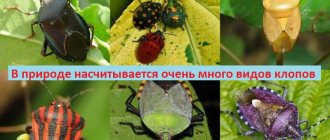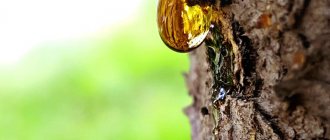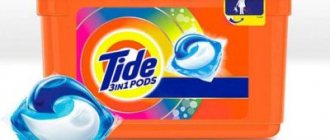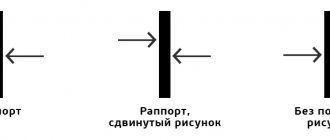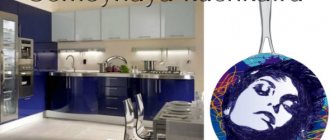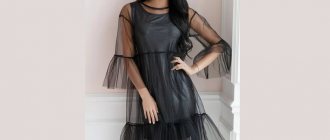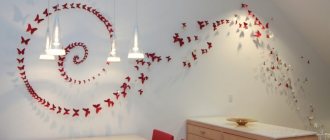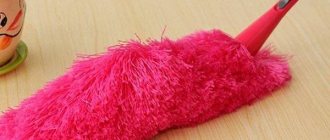Figurines for the interior: types and genres
First of all, let's clarify what a figurine is. Strictly speaking, this is a sculpture whose height does not exceed 80 centimeters and length – 1 meter.
Such things can have a cult purpose, utilitarian, or purely decorative. Figurines include copies of monumental masterpieces and monuments, souvenirs, ethnic crafts, awards, toys - soldiers, nesting dolls, Dymkovo buffoons and ladies.
The genre range of figurines or, in other words, small sculptures is as diverse as large sculptures. They are:
- portraits;
- mythological;
- household;
- historical;
- symbolic;
- allegorical;
- animalistic.
In principle, the names of the genres speak for themselves. Portrait figurines include busts, torsos and figures of people whose appearance is clearly distinguishable. Mythological - images of characters from various legends and tales. Household works include works illustrating everyday scenes from life. Historical miniature sculpture is dedicated to certain events and heroes. Symbolic and allegorical - personifies various phenomena, human qualities, sins and virtues. Despite the similarity of these two genres, sculptural allegories have an exact, well-known “decoding”, while symbolic allegories are more polysemantic and are interpreted differently. Well, figurines of the animalistic genre depict animals, which, however, can also be both a symbol and an allegory.
It is also worth mentioning kinetic sculpture - the so-called mobiles, which, thanks to spring mechanisms, create the effect of continuity, the illusion of a perpetual motion machine.
The Dragon
The dragon symbolizes life, success, wisdom, prosperity, development. It improves the atmosphere in the home, brings wealth and good luck in work. In order for the dragon to work for the benefit of the owner, it must be placed in the eastern part of the house.
Believing in the power of figurines or not is a personal matter for everyone. Most people notice that talismans help them be happy and enjoy life.
- Author: lisavdushe
Rate this article:
- 5
- 4
- 3
- 2
- 1
(33 votes, average: 4.2 out of 5)
Share with your friends!
Materials and features
Sculpture is therefore the most ancient form of fine art because it does not require specific raw materials. For the manufacture of interior figurines they use:
- stone – primarily marble;
- clay, faience and porcelain;
- metals and alloys;
- tree;
- glass, crystal;
- plaster, alabaster;
- precious and ornamental minerals;
- plastic, rubber, other synthetics.
Before you buy a nice sculpture or display a gift, answer the question: does its material match the style of your home?
Let's take, for example, bronze and marble, classical raw materials for sculpture, including small forms.
Bronze serves to embody masculinity, strength and intensity. For example, a bronze bust of a thinker or an equestrian figurine of a military leader will add solidity and respectability to the study, but are unlikely to decorate the bedroom. And marble is used to convey the feminine, plastic, delicate forms. Marble psyches, naiads and nymphs will bring a bit of “yin” energy and even a little eroticism into the atmosphere, but they can disrupt the business, rational order.
Figurines carved from wood, miniatures made from porcelain, glass, alabaster, and dull metal can be considered universal. They will not seem foreign either in a man’s “den” or in a woman’s boudoir.
"Bad" copies
Which figures are best avoided:
- African masks in many cases turn out to be an undesirable purchase for an apartment. All these masks have a certain meaning inherent in them. We cannot know this meaning because we grew up in a different culture. These products, for all their external effectiveness, can symbolize death, illness, poverty and other negativity - and we, joyful, bring back from our trips wooden masks that we bought at a good price at the local market. Therefore, it is better to be careful with such products, and the safest thing to do is leave the mask you like in its homeland.
- Decorative figurines for the interior in the form of predatory animals with a “snarling” open mouth are an undesirable choice. They carry hidden aggression within them, which will eventually affect family life.
- Real authentic antiques are also a dubious acquisition. Of course, antique things are of great value and are expensive, however, over many years of staying in various houses they may not have been filled with the most positive energy. Who knows what problems the previous owners of this very figurine had.
- Figurines depicting knives, sabers, pikes, and other edged weapons are not the best solution for decorating a home, no matter how decorative and elegant the installation is. The negativity inherent in the energy of the model, according to the teachings of Feng Shui, will certainly affect the well-being and relationships of the inhabitants of the house over time.
Texture and style
Any interior will sparkle with expressive facets if you add figurines to it! The main thing is that their appearance matches the style of the house...
All interior styles in one list
Thus, figurines made of marble, bronze and porcelain will be appropriate in a classical setting, in historical interiors - from neo-Gothic to art nouveau.
Figurines made of wood and faience will invigorate both a modern classic interior and a country style. And if the wood is noble, exotic, then objects made from it will add chic to the art deco surroundings.
Sculptures made of wood, porcelain and ceramics will emphasize the originality of the house if it is furnished in Japanese, Chinese, or African tastes.
Ceramics will take root both in a modern apartment and where retro reigns, and will also fit well into furniture a la Russe, Provence, shabby chic and boho.
Figurines made from ornamental stones and minerals will add a touch of sophistication to any but the newest, purely functional styles. For example, a figurine of a cat made of onyx will remind you of Egypt, an elephant made of jade will transport you to India, a dancer made of jasper or agate will be a delightful find for lovers of art deco, and a pegasus or bear made of rose quartz or chrysoprase will emphasize the decor in the Art Nouveau style.
Figurines made of bright plastic are useful when it comes to retro and fusion styles; there is no need to hide them when the owners also like playful, slightly ironic pop art.
Crafts made from clay, wood, and straw will make a Scandinavian-style home warmer.
And laconic, abstract designs made of steel, aluminum, copper and glass, mobiles and figurines made using the steampunk technique will appeal to fans of high-tech, minimalism and techno.
A cat is always good
The sacred animal of Ancient Egypt, personifying fertility, has long been revered as a deity. Today, the religious significance of cats has faded, but people still believe in their power. A cat figurine in the house is not uncommon. This cute creature is beautiful in both porcelain and earthenware. I have a strong belief that souvenir manufacturers carefully study cat symbolism. They offer us a cat paired with a kitten, promising happy motherhood, and a cat with a raised paw, which according to Feng Shui promises an influx of money into the house, and a graceful cat with a raised tail, giving its owners prosperity and optimism. The figurine of a cat in the house has an ambiguous, but generally positive character, and therefore we choose it for good luck.
Advice: don’t buy cheap pop art, buy high-quality and really beautiful products. Rely on your taste and appreciate artistic restraint in such works.
What else is best to avoid?
- grotesque images;
- symbols associated with death: skulls, bones, weapons;
- caricatures and parodies;
- figures with the meaning of destruction, fall;
- cruciform structures;
- fearsome objects.
By the way, the well-known Baba Yaga, despite her ugly appearance and notoriety, is a positive image. Since ancient times, in the Slavic tradition, the old woman was revered as the guardian of comfort and prosperity, and it is better to place her figurine in the kitchen!
Genre and style
It is also worth recalling the plot correspondence. Antique characters, heroes of myths, as well as copies of famous world monuments will find their rightful place in an impeccably classical setting, in interior styles classified as historical: Renaissance, Baroque, Rococo, Empire.
Historical styles - list with photos
Miniature sculptures on religious themes will be in harmony with the Romanesque and Gothic interiors: bronze or wooden allegories of divine love, repentance, mercy, mini-statues of prophets and angels.
Figurines of the historical genre, busts and figures of commanders, objects of military glory and valor are irreplaceable when it comes to the Empire style. Just as Baroque and Rococo cannot do without shepherdesses, marquises, Chinese mandarins, cupids, and genre scenes made of painted porcelain.
The more modern the style, the more modern the decor and, in particular, the miniature sculpture should be. This applies not only to the material, but also to the plot. Neither a winged seraph, nor Hercules defeating a lion, nor an elegant ballerina will fit into the industrial and hi-tech styles, remember this.
Where to put the figurines?
Even correctly selected figures may not look entirely appropriate if the wrong place is chosen for them. There are no strict rules in this matter, but designers advise adhering to the following schemes when placing figurines:
- we turn the figurine into an art object. If the product is large in size, then it is better to leave it in splendid isolation - small figures located around will only distract attention. A large figurine can be placed on the floor, low cabinet, chest of drawers or mantelpiece;
- grouping figurines of the same style or from the same material. On a shelf you can display, for example, all the available animal figurines, and it’s okay if they are of different sizes - it’s even more interesting;
- The collections are worth mentioning separately . Entire racks are allocated for them, because this is the real pride of the owner. It would be appropriate to organize LED lighting to make the collection the center of the interior.
Favorable symbolism
There is an opinion that certain figures can attract good luck. For example, the well-known elephants, arranged according to ranking, are responsible for abundance, stability and success. And a raised trunk, inlaid with stones or decorated with paintings, will become an antenna receiving positive emanations from space.
Stone frogs have also earned a good reputation. For many peoples, a pair of frogs symbolizes a strong, fertile marriage. And a frog, crowned with a crown and with a protruding tongue on which a coin is placed, will work as a “trap” for money.
Career growth is promised by objects reminiscent of movement: airplanes, rockets, cars, yachts, steamships... As well as a figurine of a horse, especially a white and rearing one.
A cat with its tail and paw raised is also considered a sign of good luck. It’s not for nothing that classic piggy banks are made in the shape of cats.
The turtle is also honored: according to Feng Shui, it is a powerful talisman that protects the health of household members. Her figurine can be made of bronze, copper, ceramics, glass... From anything that suits the style of the home.
A lizard made of malachite, carnelian or rock crystal is also suitable for the “position” of the protector of the house - it symbolizes peace and chastity.
In a children's room, a figurine of an angel can become a talisman, in a bedroom - a unicorn, bright mandarin ducks, a pyramid of three turtles or a swan pair, in an office - an amulet for career growth. And in the hallway, “place” a cockerel or place a sailboat - emblems of good news and hospitality.
The meaning of the figures
Any figurine, by its appearance, symbolizes some inner content. A pair of a man and a woman – peace, tranquility, love and creation. Angels - purity, blessing. Children's figures represent happiness, cloudless joy, openness to the world.
- Since ancient times, animal figures, in addition to their appearance, also had a unique meaning. They are placed on shelves at home to attract good luck, money, health and prosperity.
- Many people believe that figurines of elephants with their trunks raised up attract positive energy from outside, and therefore serve as a conductor of success.
- It’s not for nothing that a cat is considered the classic appearance of a piggy bank. It is her image that is associated with attracting finance.
- A popular direction in the science of the influence of symbols on the quality of life - Feng Shui, says that figurines of the god of fun and carefree - Hotei, a three-legged frog, a waterfall or a crystal sphere, bring happiness and success in financial matters to the house.
- Eastern symbols in the form of figures of monkeys, horseshoes or bells, phoenix birds mean that your home will be protected from everything bad.
If you are not a supporter of studying symbolism, then interior figurines will come to the rescue, focused solely on decorating the space without a deep meaning that may frighten or repel the future owner.
Negative symbolism
Are there figurines with a negative charge? You should be very careful when handling religious objects. Especially if they are associated with beliefs that are alien to us. We are talking, for example, about African masks, outlandish gods and other seemingly harmless trinkets. We do not know for what purposes these images are intended, in what rituals they are used. In any case, many terrible thrillers have been written and filmed about the destructive power of such paraphernalia... Psychologists warn that the source of problems can be figurines of predatory animals with gaping mouths, monsters, chimeras, sculptural images of cutting and piercing weapons. Such things awaken aggression and can provoke depression, anxiety, and outbursts of anger.
The question remains open about objects with a rich but unknown history. Yes, old, antique things are prestigious, but not always safe. No one knows in what hands they were, whose “currents” and thoughts they absorbed.
Figurines symbolizing good luck
Let's consider what figurines and decorative objects are preferable to have in the house.
- For the bedroom, the ideal solution is paired specimens , or, as an option, floor-mounted ones. Such a couple symbolizes the inseparability of your family duet. Porcelain figurines of graceful swans and intertwined trees are suitable, and for a bedroom in a modern style some kind of installation, for example, of two hearts, is suitable. One tree hung with fruits will also bring positive energy to the bedroom.
- A lizard figurine placed in the living room brought peace and tranquility to the house. So, unlike African masks, bringing a small wooden lizard from your trip would be a good idea.
- A bull or horse symbolizes health for all inhabitants of the house. Of course, such an installation should not be too bulky, because these animals already symbolize strength and energy.
- A stork placed in the bedroom will bring a woman the happiness of motherhood.
- Some may recall the famous rows of elephant figurines placed on the lace napkins of grandmothers' chests of drawers during the Soviet period. These “philistine” ceramic figurines also have their own sacred meaning. They are a powerful protection against the evil eye and bring prosperity and good luck to the home.
Leo is the king of beasts and the figure of kings
The king of beasts is a symbol of strength, power, justice. In the Middle Ages, the lion was associated with royalty and the king. Lion statues always lay at the feet of men. In Chinese mythology, the lion enjoyed well-deserved respect. Leo protects the family, scares away evil demons, and brings good luck in business. Statues of lions were placed in pairs at the entrance to the dwelling, at the entrance gate. It was believed that lions are reliable protectors.
A lion figurine is a symbol of power, strength, energy. Leo will bring courage, determination, nobility, and power to the owner. The image of a lion has powerful positive energy. If you have difficulties, you are not decisive, then the lion figurine will add courage and bravery to you. Leo is not used to retreating; all doors open before him. Lion figurine in the house
- Helps uphold principles
- Gives energy and strength
- Means nobility and power
Dragon, mythical animal. In European culture, the mythical dragon is associated with evil. In Chinese culture, the dragon, on the contrary, personifies good forces. The classification of dragons in Chinese mythology is complex. The dragon symbol is a sign of imperial power. Today, when buying a dragon figurine, many rely on their own taste, and not on ancient legends.
Fox figurine. It's not so simple with a fox. In the Western imagination, many animals have a bad reputation, such as rats, pigs or dragons. With a fox it's the other way around. In the West, people admire the intelligence, intelligence, determination and beauty of the red-haired beast. In China, the fox appears as a sorceress, with a controversial reputation. She has a connection with spirits and the other world. A fox figurine will teach diplomacy:
- Flexibility and grace
- Diplomatic Mind
- Flexibility in communication
- Dexterity in business
A panther figurine is a great gift for a successful woman. Panther is a cat woman in a square. A brave, confident and graceful big cat will conquer not only with its strength, but also with its intelligence. The panther protects the house from evil spirits, ill-wishers and troubles. She believes that home is a fortress and will not allow enemies into her lair. The doors are always open to friends and all people with good intentions. The panther figurine will appeal to self-confident, seductive women who understand love.
How and when did talismans of happiness and good luck appear?
No one knows how and when the first talismans appeared. But archaeological finds can confirm that people began using symbols of happiness a very long time ago.
It is generally accepted that talismans of happiness came to us from the ancient Druids.
One of the theories about the appearance of the first amulets says that the first sacred symbols originated in the Druid culture. It is difficult to judge how true it is, because historians also failed to find any mention of the time of the appearance of the Druids themselves.
The Druids themselves did not keep records. They transmitted the secret knowledge of their brotherhood exclusively orally. This not only complicated the process of training new followers, but also led to the fact that now this knowledge is practically lost.
Subsequently, amulets and amulets either gained popularity or fell into oblivion again. It is known for certain that symbols of happiness and talismans were popular during the heyday of the Roman Empire. After that, they were forgotten again, only to be remembered once again in dark times. Now they are also becoming fashionable, despite the fact that no one burns witches at the stake anymore.
LiveInternetLiveInternet
Quote from Alicia_Gadovskaya's message
Read in full In your quotation book or community!
NETSKE - figurines that bring happiness and good luck :)
NETSKE -
These are small bone or wood carvings made by Japanese or Chinese craftsmen. A strange, but at the same time attractive world lurks behind these graceful, frozen, but at the same time, seemingly living miniature images of deities. These are various symbols, people, animals, birds and fish. Masterfully crafted by human hands, the netsuke sculptures, only three to four centimeters high, are very detailed in their relief. Expressiveness is manifested in the unique charm of executing the figure, often with a dose of humor and imagination. The art of netsuke is a source for studying the mores, customs, religious and moral edgings of life in Japan and China in the 19th-19th centuries. The word “netsuke” - “ne-tsuke” - is written in two hieroglyphs: the first means “root”, the second means “to attach”. Netsuke is a keychain - a counterweight, with the help of which a pouch with tobacco, a bunch of keys or an inro - a box for medicines and perfumes - is worn at the belt. The need for such a device is caused by the lack of pockets in Japanese traditional costume.
I have this sculpture :) a gift) But I didn’t find it in the descriptions, and threw away the label with the name... Maybe someone knows the name? :) Most likely, the goddess of music)))
| Daikoku and Ebisu - prosperity and luck, going hand in hand. Two gods of happiness: Deikoku is depicted in a kariginu suit, wearing a tori hat - eboshi, with a hammer, a rat and a bag. It is believed that with each blow of the mallet, happiness, health and love increase, as well as heavenly rice in the bag, which symbolizes wealth and prosperity. Ebisu is depicted with the magical fish Tai, a symbol of good luck and success. |
| Ebisu - one of the seven gods of happiness, the patron of good luck. Depicted in a high hat, with a fishing rod and fish Tai The sacred fish Tai is considered a symbol of good luck and spiritual achievements. According to legend, it is very difficult to catch a sacred carp with bare hands in clear heavenly water - it is also difficult to achieve peace of mind, harmony and enlightenment. Sometimes Ebisu acts as the patron saint of fishermen and sailors |
| Show-shin literally “star of longevity” - one of the deities of the heavenly triad “San-Xing”, the patron of medicine and health, bringing healing from serious illnesses and longevity. Depicted with a huge staff made from ginseng root, which cures all diseases, and a magic peach of longevity in his hand. Often a gourd with clear crystal water is tied to the staff - a symbol of life and longevity. |
| Zaoshen - Guardian of the home. Sometimes he is depicted with a round tablet in his hand, where the cherished dreams and wishes of all family members are written down. On December 24, Zaoshen goes to heaven and reports to the heavenly office about how he protects the house and helps with the household, conveys all wishes and they are sure to be fulfilled. Zaoshen often has attributes that symbolize health: a magical peach that bestows longevity, a gourd with clean clear water, personifying a long happy life, purity of family relationships and promising well-being for descendants. |
| Hotei - canvas bag - one of the seven gods of happiness. Patron of fun, joy, communication and prosperity. It is believed that it predetermines people's destinies and helps in the fulfillment of cherished desires. A belief is connected with this: if you stroke the figurine of Hotei on the stomach more often, thinking about something good, then your wish will definitely come true. The image of Hotei is associated with a specific character who lived in China at the end of the 10th century, a small fat monk named Qi Ci, who walked around the villages with a large canvas bag and rosary. Legend says that where he appeared, good luck, health and prosperity came to people, and happy and kind predictions always came true. Whenever anyone asked what was in his bag, he replied that he had the whole world in there. Therefore, it is believed that he carries all human desires in the bag. Once, when he was already an old man, sitting at the gate of some temple, Hotei exclaimed: “Eh, people, people, you didn’t recognize me. But I am the future Buddha-Maitreya.” And, indeed, it is believed that Hotei is an emanation of the Buddha-Maitreya. In the East, the coming of Buddha-Maitreya was understood as the ordering of the Universe, as the achievement of world harmony; in popular understanding, it meant the advent of an era of prosperity, well-being, contentment and a carefree life for all people. Therefore, Hotei was considered the embodiment of happiness and carefreeness. In the 17th century, he was canonized in Japan and became one of the seven gods of happiness. In netsuke it is depicted with various attributes indicating the wish for prosperity, longevity and a life free from adversity. |
| Jurojin - a long-lived old man - one of the seven gods of happiness: the god of longevity and immortality. As a rule, the image of Jurojin contains attributes indicating a wish for a long and happy life: a scroll with the inscription “Heaven grants immortality”, a magical musical instrument, the sounds of which rejuvenate a person and fulfill all good wishes. Sometimes a triple swastika is depicted - a symbol of perpetual motion. |
| Daikoku - one of the seven gods of happiness. God of wealth and prosperity. Sometimes he acts as the patron of the hearth. Depicted with a mallet, rats and a bag of magic rice - a symbol of wealth and prosperity. Rats are Daikoku's assistants and our friends. They gnaw holes in his bag, and magical rice generously falls from the sky right into our palms. |
| Fukurokuju - one of the seven gods of happiness: the god of wisdom, academic career and intuition. The very image of Fukurokuju testifies to great intelligence and wisdom: his head is unusually elongated, there are deep transverse wrinkles on his forehead, and he usually holds a staff with a scroll in his hands. |
| Ame no Uzume - fairy of the moon, goddess of happiness, love and joy. She is depicted as a thick-cheeked, smiling woman with long, flowing hair. People called her Otafaku “great happiness.” She is considered the ancestor of ritual dances and the founder of theatrical art. Therefore, Ame no Uzume is often depicted dancing or holding an actor's mask in her hands. |
| Futen - god of the wind. A deity who brings good luck along the way, protecting travelers from all kinds of troubles. You can take the figurine with you on the road as a protective talisman. According to legend, it holds light favorable winds in the bag. |
| Kanzan and Jittoku - Buddhist monks of the Tang period who were famous for their unusual behavior and extravagant actions. Sometimes these characters were considered a pair of twins, like he-he er-xian - the immortal twins of unity and harmony. In netsuke they symbolize brotherly love, mutual understanding, harmony and agreement. They were also given to spouses with the wish to live “soul to soul”, as a symbol of the “sacred family.” |
| Gasisu - a person who records fate. A time keeper who records good, happy dreams and dreams that will definitely come true and bring happiness. Gasisu's magical notes turn what you want into reality. |
| Daruma - Bodhidharma - founder of the Zen Buddhist school. In the 510s he went to China, where he founded the Shaolin Monastery in the Songshan Mountains. In a state of silent concentration, Daruma experienced Satori (enlightenment). It is a symbol of wisdom, clarity, compassion for all living beings. |
| Confucius - philosopher, sage who lived in China in the 6th century BC. The founder of Confucianism, a doctrine that had the status of a state ideology in Japan and China. Perhaps most often in netsuke there are illustrations of the principle of xiao-filial piety - one of the foundations of Confucian ethics. |
| Lao Tzu - philosopher, sage, founder of the doctrine of Tao. He left behind a manuscript of 5,000 hieroglyphs - the famous “Tao Te Ching” - a book that became the basis of Taoism - |
| Sivanmu - Queen of Heaven, owner of the potion of immortality. Sivanmu is very popular. It is believed that it bestows happiness in love, health and prosperity. Her image is attractive because she is considered the owner of a garden in the Kunlun Mountains, where magical peach trees grow, the fruits of which grant longevity and heal from serious illnesses. |
| Benzaiten - one of the seven gods of happiness, goddess of love and art. She is sometimes considered a water deity and the patroness of music. Benzaiten is depicted holding a biwa lute. In the east, girls turn to her with requests for love and a happy marriage. |
| Tengu - “heavenly dog” is a forest spirit living on Mount Kuramayama in Japan. A fairy-tale creature capable of transformation. He is the protector of night travelers, the spirit of roads. According to legend, he teaches warriors martial arts and fencing. |
| Karasisi Pho - the heavenly lion of the Buddha, which is a guardian against evil spirits and is associated with the wish for happiness and prosperity. Sometimes Karasisi Fo is depicted with a ball in its paws or with a peony flower. In this case, it symbolizes the desire for nobility, high ranks and wealth. Karasisi Fo is considered the patron saint of children and fragile human spirituality. |
| Cat on Soma Namazu is the fish of earthquakes. The movement of the tail of the giant Namazu, located underground, is the cause of natural disasters. The cat, comfortably located on Soma, is a symbol of long life, harmony, peace and the good disposition of the formidable elements towards everything living on earth. |
| Gamma Sennin - immortal with a toad - a saint who received the secret of longevity from a toad and became famous as a great healer. |
| Fukurokuju turtle - one of the seven gods of happiness: the god of an academic career, wisdom and longevity. Fukurokuju is sometimes depicted turning into a turtle - a symbol of longevity, wisdom and the universe. |
| Yamabushi - wandering monks - a symbol of spiritual teaching, wisdom, perseverance and fortitude. Sometimes they are depicted carrying a gourd with clear, crystal water - a symbol of life, or carrying a staff with a scroll - a symbol of wisdom and longevity. In netsuke, Yamabushi is a symbol of an unbending desire for spiritual perfection. |
| Dongfanshuo - one of the gods of happiness, patron of gold and silversmiths. Usually depicted with a bag of gold and silver. Brings good luck in business, trade and crafts. He is also considered the god of harmony and balance. Gold and silver in the bag are a symbol of two balanced principles - the sun and the moon, yin-yang, masculine and feminine, etc. It is believed that it brings good luck and harmony in the relationship between a man and a woman. |
| Qin Gao-Kinko - Taoist saint who lived 1122-1247. BC. in the Principality of Zhao. Often depicted swimming or flying on a huge carp. According to legend, he sank to the bottom of the lake and, after staying there for a month, emerged from the waters on a huge carp. A symbol of longevity, wisdom, spiritual achievements and taming the elements. |
| Baby with a sparrow - a child with a chick of a sparrow of happiness. "Fukura-suzume" is an unusually benevolent symbol. The hieroglyph “fuku” means happiness, “ra” is a plural suffix. Thus, the heavenly magic sparrow sitting on the baby is a symbol that brings happiness, heavenly protection and protection. |
| Karako - Chinese child. Initially, the image of boys and girls arose as a wish for an heir who would occupy a high social position and thus bring prosperity to the family. Later, the karako came to be considered a benevolent symbol, bringing happiness and prosperity. He is depicted with various attributes, for example, with the sacred fish Tai - a symbol of good luck, which on its tail brings him happiness. |
| Turtle - a symbol of wisdom and longevity. It was believed that the tortoise could live for a thousand years, so it was unusually wise and could give invaluable advice. It is also considered the image of the Universe: its shell is the vault of heaven, and its belly is the earth’s surface, while it itself is the content, the essence of the entire universe. The turtle is a symbol of home, stability and well-being. |
| The Dragon - a symbol of fortitude. The keeper of treasures and secrets, personifies extraordinary strength and power. The embodiment of magical powers. The image of a dragon expels evil spirits from the home and protects it. Can give a person true invulnerability. Able to see truth outside of time. and space, and therefore give good advice. Patronizes spiritual endeavors. |
| Snake - represents wisdom and vitality. The snake is a symbol of female beauty. It has the ability to shed its skin every time it grows out of it, so it not only lives for a long time, but is also able to be reborn, emerging from everyday storms renewed and even more beautiful. |
| Urashimo Taro - a man who became a magical crane - a symbol of happiness and fulfillment of desires - thanks to his unquenchable love for his wife - the goddess. He has the gift of saving the souls of people who have made a mistake. The image of Urashimo Tarot has become a symbol of long life, helping those in need and undying mutual love between spouses. |
| Tsun-wu Kun (Hanuman) - king of the monkeys. Received the name - Sage equal to the sky. He made a vow to help those who embarked on the path of spiritual development in strength and knowledge. A symbol of the right choice, separation of the true from the imaginary. The figurine of Tsun-wu Kun has a symbol of a long, happy life, full of wisdom, nobility and perseverance. The monkey is also a symbol of originality of thinking, cunning, ingenuity and ingenuity. She personifies the divine qualities of a magician, a magician, an intelligent and spiritual person, the master of his instincts and creative powers. The monkey is also a teacher, showing the duality of good and evil deeds, and often symbolizes the state of a person, either unenlightened, seeking the truth, or spiritual, finding the truth, but hiding under the mask of a jester, so as not to be a “black sheep.” |
| Tiangou - a heavenly dog that protects all entrances to a temple or home from evil spirits and bad people. Patron of children. Also symbolizes devotion and fidelity. |
| Horse - quickness of thought, brightness of imagination, talent and creativity. The horse carries the wind of change and forces that bring positive changes to a person’s life. It is also considered a manifestation of spirituality and patronizes gifted people - artists, poets, musicians. |
| Tiger - a symbol of power, fearlessness, courage, power and nobility. He is hidden energy and the fiery element. |
| Rat - symbolizes wealth, prosperity and well-being. She is the companion of the god of wealth and prosperity - Daikoku. When the Buddha gave blessings to animals, it was the rat that first received it through cunning and agility. She grabbed the tail of the bull as it ran towards the Buddha, and when the bull bowed its head for blessing, the rat ran over its back and neck and fell straight into the Buddha’s palms. On a deeper level, the rat symbolizes creative energy and activity. And in this sense, a turtle on a rat is a union of wisdom and activity. |
| Bull - symbolizes reliability, calm strength. This is a sign of a long and fruitful life, stability and sustainability, perseverance in achieving the intended goal, an example of hard work. In the East, there is an image of a cosmic buffalo, personifying the triumph of justice and harmony. |
| Vayu - a fair wind of good luck. Vayu is a child of Earth and Sky with a cheerful character and playful disposition. Brings happiness and good luck in all endeavors and deeds, helps fulfill your most cherished desires, carries away all sorrows and sorrows. |
| Yuan Mu - eternal mother, a symbol of maternal love, care, family happiness. Protects women and children. Promotes a successful resolution of the burden. The personification of happy motherhood. |
| Master of the tea ceremony The tea ceremony - “cha-no yu” - is a symbol of the aesthetic perception of the world as a single whole, filled with beauty, simplicity and naturalness. The rule of the tea ceremony says: “Make your heart in harmony with other hearts.” Prepare your tea with water drawn from the well of wisdom." |
| Crocodile - is a symbol of the protection of homes and temples. Represents endurance, nerves of steel, the ability to wait, and secret calculation. |
| Actor with mask The ability to treat life as a theater, to go beyond your narrow boundaries and be at least a little different. Life is like a game, like a dream that has no support, a dream filled with inexpressible suffering and inexpressible beauty. And among all this, the actor, as a person striving for the Beautiful, shows the path to Enlightenment. |
| Guanyin - “hearing everything in the world” - a female deity who saves from all kinds of disasters, helping everyone who turns to her. The embodiment of endless compassion for all beings and all the best feminine qualities. The female manifestation of Avalokiteshvara Buddha of love and compassion. |
| Cat (Rabbit) - a symbol of longevity, an expert in healing potions. If you ask nicely, he will share the elixir of longevity. In addition to immortality, this elixir brings happiness and good luck. The Cat and the Hare are mysterious creatures. They symbolize home comfort, warmth of family feelings, psychological and emotional comfort. |
| Cicada catcher Represents subtle taste, the ability to enjoy exquisite things, music, painting, poetry. In the east, they caught cicadas and enjoyed their singing as well as the singing of birds. To master true art or true knowledge, you must completely empty yourself of everything else. A symbol of inner perfection and deep fusion with nature. |
| Kubera - god of happiness, wealth, righteousness and piety, keeper of treasures. Kubera is unusually kind and fair, he gives people happiness and success, personifies the harmony of spiritual and material wealth. |
| God of the Sea - lord of the water elements, patronizes sailors, fishermen and sea travelers. He in every possible way protects and protects people who are at the mercy of the water elements. God of the Sea A symbol favorable for everyone associated with water. |
| Tanuki (Kitsune) — fox-werewolf. Their image is associated with funny jokes. Kitsune loves to fool people and fool them. It is customary to place her image in the house - seeing how in the mirror they are harmful and disgusting, evil spirits leave this house in embarrassment. In this way, Kitsune protects its owner and home. |
| Bishamonten - one of the seven gods of happiness - the patron of warriors and people involved in martial arts. He is depicted as a formidable warrior in armor with a trident or sword and a pagoda in his hands. As the god of happiness, Bishamoten fights only in defense of good. His motto is “Loyalty, duty, honor.” Patronizes warriors and people who profess precisely these virtues; helps them gain extraordinary fortitude and courage, wisdom and justice. |
| Owl - a symbol of wisdom, intuition. Able to see in the dark, feel, understand and predict events. She represents spiritual wisdom, clarity and calm. Three owls combine two powerful symbols: wisdom and non-doing evil. In this plot, the owl figures froze in the gesture “see no evil, hear no evil, speak no evil,” symbolizing complete detachment from everything untrue. |
| Dzhankuy - “peach club” - tamer and thunderstorm of demons. In China and Japan, it is customary to hang his image as a talisman against the forces of darkness. Special paintings with Jankuy were called “hosoeke” (protection against smallpox) and were considered amulets against epidemic diseases. Represents protection from all sorts of troubles and misfortunes. |
| Taoist — drinking a cup of sake and feeling pure joy. A symbol of a spontaneous, non-conceptual vision of life. |
| Buddha - who has achieved complete Enlightenment, knowledge of the true nature of things. As a prince, he left the palace at the age of 29 to find happiness that did not depend on external conditions. His teaching on the nature of the mind, which arose two and a half thousand years ago and is known in the West as Buddhism, shows that everyone can achieve the state of Enlightenment because everyone's original nature is the Buddha. |
| Stray actor with a monkey - a symbol of creativity, theatrical art, travel and freedom. There was a belief in the magic of the game, which was seen as a means of healing the soul and body. The purpose of theater is to balance the hearts of all people, to influence high and low, to be a source of longevity, happiness and prolongation of life. |
| Amitayus - Buddha of limitless life. Meditation on Amitayus and turning to him gives a long life, free from diseases of the body and mind. |
| Amaterasu “The Great Sacred Goddess, shining in the sky, the Sun Goddess.” “Ama” means “sky”, “Terasu” means “to illuminate”, “to shine”. She is depicted as a beautiful woman with a fan, wearing a kimono decorated with birds of happiness - cranes. The personification of all feminine qualities is embodied wisdom, beauty, purity and harmony. Amaterasu is considered the mistress of the seven gods of happiness. |
| Sleeping monk - a subtle erotic allusion. With the help of a barely noticeable transformation of the drumstick, the scene depicted in the netsuke - quite often found in other masters - acquires an ambiguous and frivolous sound. |
| Ganesha - Indian god of wealth. A good-natured fat man with an elephant's head and one tusk. He is the patron of merchants, travelers and scientists. But his main occupation is to remove obstacles. |
| Goat - a symbol of tenderness, softness and sensitivity. She has self-esteem and is not afraid of any obstacles. She is a protector with clairvoyance and intuition. |
| Boar - eater of bad dreams. The boar is a symbol of prosperity and nobility. Hardy, adamant and noble in protecting the weak. And, even indulging his weaknesses or yielding to others, the Pig lives in harmony and is rich not only materially, but also spiritually. |
| Dog - a symbol of courage, bravery, selflessness and justice. Many dogs are known to have hypersensitive perceptions, being able to understand grief and warn of misfortune and natural disasters. In the East, the dog represents home, family, stability of family relationships, as well as faithful and reliable protection. |
| Man with a lantern What is he looking for? What unsolved secret does he want to remind us of? Only the ancient master who created it, and perhaps one of you, knows the answer. |
| Ai Tzu - literally “teacher of love”, uniting loving hearts and patronizing happiness in marriage. According to legend, Ai Zi has a bag of red threads. In the light of the moon, Ai Tzu studies the predestination of Heaven according to the Book of Marriages. Having realized who is destined to be whose wife, he ties them with red threads, securing the will of heaven. |
| Guan Yu Outstanding commander of the 3rd century. Captured, he refused to go over to the enemy’s side and was executed. The name Guan Yu became a symbol of perseverance, honor and devotion. Patron of military and martial arts. |
| Zhang Golzhang Guolao - a Taoist saint releasing his magic mule from a gourd. The creator of various miracles and magical abilities, he symbolizes the limitless possibilities hidden in every person. |
| Kojuraho - Indian goddess of sensual love. A symbol of eternal femininity and eroticism. Harmonizes relationships. Patronizes lovers. Kojuraho figurine is a copy of a fragment of a fresco of an ancient Indian temple dedicated to love |
| Mahakala (Great Black) - a fair wind of good luck. Vayu is a child of Earth and Sky with a cheerful character and playful disposition. Brings happiness and good luck in all endeavors and deeds, helps fulfill your most cherished desires, carries away all sorrows and sorrows. |
| Rhinoceros - a symbol of invincibility and stability of life. Any difficulties are nothing if he is your patron. Wishing you success in business and career. |
| Elephant - a sacred Indian animal, strong, kind, noble. It is believed that if there is an image of an elephant at home, then good luck comes there. |
| Stele of Love - a symbol of unity and harmony of two principles - feminine and masculine, yin and yang. Favors lovers, brings happiness in love affairs. |
| Pig - a fair wind of good luck. Vayu is a child of Earth and Sky with a cheerful character and playful disposition. Brings happiness and good luck in all endeavors and deeds, helps fulfill your most cherished desires, carries away all sorrows and sorrows. |
| Rooster - in the symbolism of the East it means desire. In its negative manifestation there is greed and base passions, but transformed by spiritual practice, the emotion of desire becomes the Great Discriminating Wisdom. |
| Hippos - a symbol of love, devotion and tenderness. Harmonizes and strengthens love relationships, brings joy and constancy. Giving a hippo figurine is considered a symbol of wishes for love and good luck in love affairs. |
You can spend a long time and troubles building your business, studying the market and profitable areas of activity, completing red-tape paperwork and being nervous about the lengthy registration procedure, or you can buy a ready-made company with a license and director and start earning money right now! Ready-made companies are beneficial because quality assurance and reliability have proven positive results. Contact us, don’t waste your time, a ready-made business is waiting for a signal to the future!



